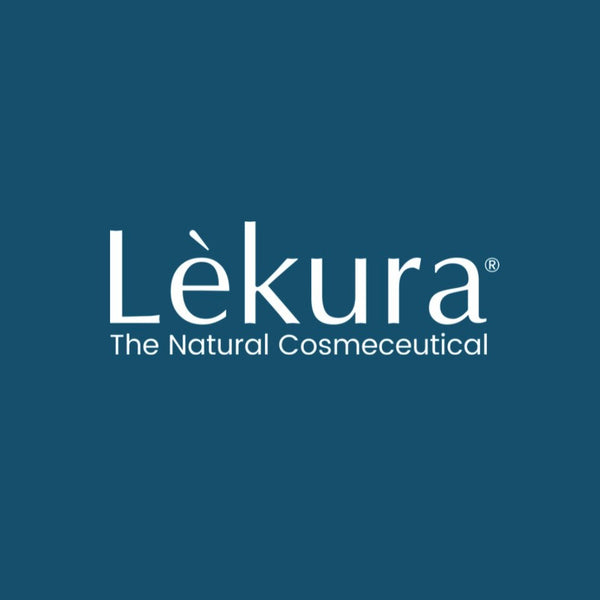In our quest for flawless and youthful skin, we often meticulously choose skincare products, believing they will enhance our beauty without any adverse effects. However, the reality is that some skincare products contain hidden ingredients known as endocrine disruptors. These substances, although common, pose a potential threat to our health and hormonal balance.
In this article, we'll explore what endocrine disruptors are, why they are considered harmful, and provide a list of common examples found in skincare. Additionally, we'll delve into the realm of natural alternatives, ensuring that you can make informed decisions for your skincare routine.
Understanding Endocrine Disruptors:
Endocrine disruptors are chemical compounds that can interfere with the normal functioning of the endocrine system. The endocrine system plays a crucial role in regulating various bodily functions, including growth, metabolism, reproduction, and mood. Endocrine disruptors can mimic or block the actions of hormones in our bodies, leading to hormonal imbalances and potential long-term health issues.
The Relaity of Endocrine Disruptors:
1. Hormonal Imbalance
Endocrine disruptors can disturb the delicate balance of hormones in our bodies. This disruption may lead to reproductive issues, fertility problems, irregular menstrual cycles, and even developmental abnormalities in children.
2. Cancer Risk
Certain endocrine disruptors have been linked to an increased risk of hormone-related cancers, including breast, prostate, and testicular cancer. Prolonged exposure to these substances may contribute to the development of such diseases.
3. Developmental Disorders
Exposure to endocrine disruptors during critical periods of development, such as during pregnancy or childhood, may result in long-lasting effects on neurological development, behaviour, and cognitive function.
Common Endocrine Disruptors in Skincare:
1. Parabens
Commonly used as preservatives, parabens (such as methylparaben and propylparaben) can mimic oestrogen in the body. They have been detected in breast tumours and have raised concerns about their potential contribution to breast cancer. *see references below
2. Phthalates
Often found in fragrances, phthalates are associated with hormone disruption and have been linked to reproductive and developmental issues, including reduced sperm count and genital abnormalities.
3. Triclosan
An antimicrobial agent, triclosan, has been linked to hormonal imbalances and may contribute to antibiotic resistance.
4. Synthetic Fragrances
Fragrances are often composed of numerous chemicals, some of which can be endocrine disruptors. Manufacturers are not required to disclose the specific components of their fragrance mixtures, making it challenging to identify potential risks.
Natural Alternatives for Safer Skincare:
1. Essential Oils
Essential oils derived from plants offer natural fragrance and skincare benefits. Look for products scented with essential oils rather than synthetic fragrances.
2. Natural Ingredients
Opt for skincare products that use natural ingredients, as they are less likely to contain synthetic chemicals and endocrine disruptors.
3. Plant-Based Preservatives & antioxidants
Look for skincare products that use naturally derived preservatives and antioxidants like grapefruit seed extract, radish root, vitamin E, or rosemary extract, which can help extend the product's shelf life without resorting to endocrine-disrupting chemicals.
The presence of endocrine disruptors in skincare products is a concerning reality. Understanding the potential risks associated with these chemicals empowers us to make informed choices about the products we use. By opting for natural alternatives and scrutinizing ingredient lists, we can prioritize our health and well-being without compromising our skincare routines. Let's embrace safer, more natural options and embark on a journey towards healthier, radiant skin.
Lèkura skincare is free from endocrine disruptors. We carefully research each ingredient thoroughly before they are considered for use in our formulations. When we select an ingredient, we check its origin, functionality, effectiveness and safety. We ensure that each ingredient is naturally renewable and free-from any toxic or synthetic matter. All of our ingredients are derived from fruits, plants, minerals, seeds and nuts. We never use synthetic chemicals, or animal derivatives.
If you have questions feel free to dig deeper into the below references or send us an email contact@lekura.com.au
References:
-
Darbre, P. D. (2006). Metalloestrogens: an emerging class of inorganic xenoestrogens with potential to add to the oestrogenic burden of the human breast. Journal of Applied Toxicology, 26(3), 191-197.
-
Rochester, J. R. (2013). Bisphenol A and human health: a review of the literature. Reproductive Toxicology, 42, 132-155.
-
Diamanti-Kandarakis, E., Bourguignon, J. P., Giudice, L. C., Hauser, R., Prins, G. S., Soto, A. M., ... & Gore, A. C. (2009). Endocrine-disrupting chemicals: an Endocrine Society scientific statement. Endocrine Reviews, 30(4), 293-342.
-
Sathyanarayana, S., Barrett, E., Butts, S., Wang, C., & Swan, S. H. (2017). Phthalate exposure and reproductive outcomes in humans: a review of the literature. Environment International, 99, 41-59.
-
Velez-Montoya, R., & Oliver, S. C. (2014). Endocrine disruptors: A review for ophthalmologists. Survey of Ophthalmology, 59(5), 512-519.
-
Environmental Working Group (EWG). (n.d.). Skin Deep® Database: Parabens. Retrieved from https://www.ewg.org/skindeep/ingredients/703937-PROPYLPARABEN/
-
European Commission. (2012). Scientific Committee on Consumer Safety: Opinion on Parabens. Retrieved from https://ec.europa.eu/health/scientific_committees/consumer_safety/docs/sccs_o_041.pdf
-
American Academy of Dermatology (AAD). (n.d.). Fragrance in skincare products. Retrieved from https://www.aad.org/public/everyday-care/skin-care-basics/your-products/fragrance
-
EWG. (n.d.). Skin Deep® Database: Triclosan. Retrieved from https://www.ewg.org/skindeep/ingredients/706623-TRICLOSAN/
-
National Institute of Environmental Health Sciences (NIEHS). (2022). Endocrine Disruptors. Retrieved from https://www.niehs.nih.gov/health/topics/agents/endocrine/index.cfm

